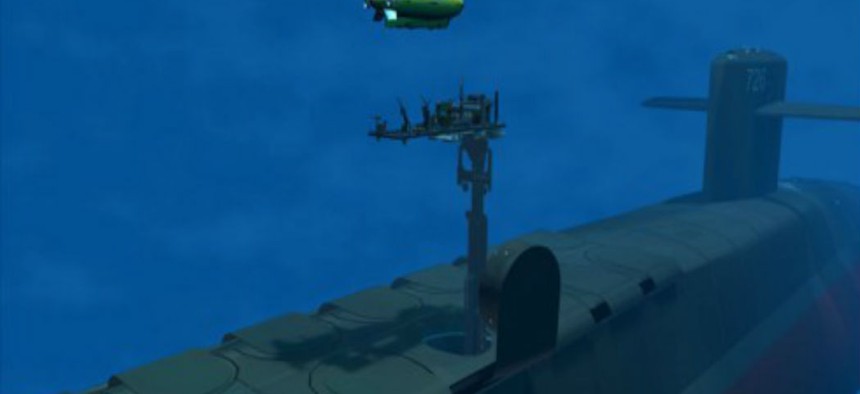DARPA proposes portable antenna for underwater drone communication
Low-frequency electromagnetic technology could allow for underwater-capable antennae small enough to be carried by drones.
As the Navy continues to develop unmanned underwater vehicles (UUVs), the next question is how these underwater drones will communicate and collaborate. One answer to this conundrum, proposed by the Defense Advanced Research Projects Agency is A Mechanically Based Antenna (AMEBA), which will enter the early development stage this summer.
“One of the things we want to look at is the ability of UUVs … to communicate and collaborate together. How do we tie in multiple unmanned platforms to work with each other autonomously? That’s an area that we haven’t gone very far in,” said Howard Berkof, deputy program manager of the Navy’s Unmanned Maritime Systems.
Currently, UUVs have to surface each time they need to send a message, according to a DARPA program manager. “To be able to bring useful communications systems, to be able to do things like text and voice and data … underwater … that would be a big step forward,” the program manager said.
The stumbling block developers have faced in using such frequencies for underwater communication has been the immense size of the antenna needed to generate such large electromagnetic wavelengths. According to the Navy, the antenna facility built for this purpose during the Cold War, now out of service, spans a total of 2,000 acres.
However, DARPA now intends to build AMEBA small enough to be installed on UUVs for direct underwater communication -- and even one small enough for troops to carry in their packs. During subterranean operations, or in heavily fortified buildings, a portable AMEBA would allow soldiers to communicate with each other and receive remote orders.
The technology behind the reduced size would use small-scale electric or magnetic fields and would involve mechanically manipulating these fields in order to generate energy, the program manager explained.
AMEBA would emit electromagnetic pulses with a range of between 100 and 3,000 hertz. These extremely low-frequency waves are the only frequency level that can penetrate seawater.
Going forward, DARPA is working on ways to keep miniature magnetic or electrical fields moving and generating the power necessary to produce such low frequency waves. A DARPA official explained that the effect sought is like that of a magnet spinning in a vacuum, indefinitely in motion.
Proposals for development have been coming in since January, and following early-stage research and development this summer, DARPA projects that a prototype portable AMEBA could be ready within four years.
NEXT STORY: Boeing to demo DARPA space plane





